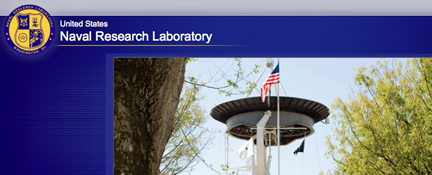
[SatNews] Physicists and Engineers at the U.S. Naval Research Laboratory Plasma Physics Division and Naval Center for Space Technology have researched a technique to ‘sweep’ Low Earth Orbit (LEO) debris from space using an Active Debris Removal (ADR) system of deployed micron-scale dust.
What is it? Well it’s not a giant broom (though wouldn’t that be funny), but it is designed to clean up the mess in lower Earth orbit. The essential idea is that dust, if artificially deployed on orbit in opposite direction to the debris trajectory, can induce an enhanced drag on the debris. The novelty is that by choosing the dust characteristics, for instance, mass density, size, etc., it is possible to synchronize the rate of dust and debris descent. This offers the possibility to clear a very large volume of small debris by deploying a modest amount of dust in a narrow layer and “sweeping” of the debris volume by the dust layer.
What does that mean? Well, the Naval Research Lab (NRL) wants to fight fire with fire, or in this case, dust with dust. Basically, there’s a lot of junk floating around in space. NRL wants to use physics (namely, the gravitational pull of the planet) to take control of the random amounts of debris floating around up there by making them, well, fall in line. Think of it like lemmings, only instead of getting the little dudes to safety, we’re gonna burn them up (harmlessly) in the atmosphere. Sounds complicated, right? Well actually, it’s more reasonable than you might think.
What does it do? It is well known that the natural drag due to neutral atmosphere decays satellite orbits. However, the magnitude of the drag is too small on the orbital debris above 600-700km but significant on the micron-scale dust grains. The method would use the natural atmospheric drag to decay the deployed dust orbits and simultaneously use the descending dust layer to induce enhanced drag on the orbital debris. Like the natural dust, most of the deployed dust as well as the small orbital debris will incinerate while reentering the Earth’s dense atmosphere. So the environmental effect of releasing the dust is expected to be benign.
Research indicates that the dust based ADR system can be a cost effective means to clear deadly untrackable small orbital debris with manageable risks to existing space assets and can be developed with off-the-shelf type technologies in the near term. This same concept can be utilized for removing larger debris with a suborbital dust deployment. Preliminary analysis suggests tungsten be a prime candidate for the dust because of its high density, relative abundance, availability in powder form and modest cost, all contributing factors to the efficiency and economy of the system.
How can this help? In LEO, below 2,000 kilometers, orbital debris can travel in excess of 8 kilometers per second, or greater than 17,000 miles per hour, wreaking havoc on invaluable space assets like the International Space Station (ISS), Hubble Space Telescope and numerous weather satellites, damaging solar arrays, instrument panels and solar shields.
The NASA Orbital Debris Program Office estimates there are more than 21,000 orbital debris objects larger than 10 centimeters (roughly 4 inches) in diameter in LEO, and approximately 500,000 object particles between 1 and 10 centimeters, with the number of debris particles smaller than 1 centimeter in excess of 100 million. In 2011, the National Research Council (NRC) conducted an exhaustive study to assess NASA’s meteoroid and orbital debris program. The report concludes that LEO orbital debris is at the ‘tipping point’—the threshold for collisional cascade, or Kessler effect, in which the number of objects in LEO is dense enough that collisions between objects could cause a cascade. This exponentially increases the likelihood of further collisions and makes it increasingly risky to maintain space assets without clearing the debris population.
The problem of space junk is not one that can be swept under the rug. In fact, it’s a growing and complicated problem that really does need to be addressed. There are a couple of calls to action regarding mitigating space degree, but like cleaning house, you need to perform many actions to get the space spruced up (oh, so many puns). I’m also a fan of anything that can get the job done while using the gravitational pull to do it.
NRL has a concept to be the Pied Piper of space dust. It’s a dirty job but somebody’s gotta do it, right? Besides, it’s not going to clean itself.
The NRL infosite is located at http://www.nrl.navy.mil/
This NRL story is by Jessica L. Tozer,
who is a blogger for DoDLive and Armed With Science. She is also an Army veteran and
an avid science fiction fan, both of which contribute to her enthusiasm for
science and technology in the military.

